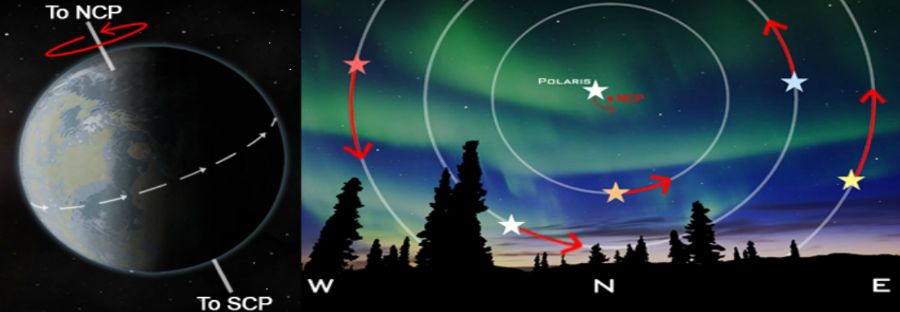
Earth rotates about the axis through its north and south poles. Thus, objects in the sky appear to circle about the celestial poles. It takes an object approximately 24 hours (exactly 23 hours 56 minutes) to complete an apparent rotation.

Objects in the northern sky appear to circle the north celestial pole. If an object's declination is within your latitude in degrees of the NCP, it is a circumpolar star. This means that it is above the horizon 24 hours a day – even during the daytime. If a star is even further separated from the NCP, the fraction of the day that it is above the hroizon is less than 24 hours and this fraction gets smaller as that angular separation increases.